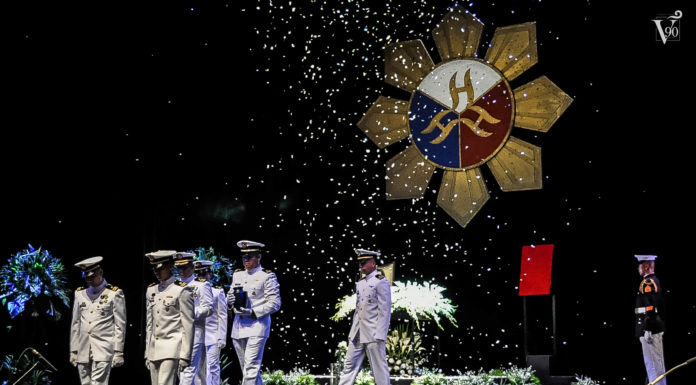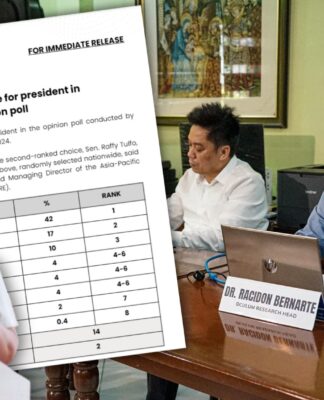CHANGING times call for more discoveries.
With the University celebrating the 50th year of the UST Research Center (on the natural and physcal sciences), more Thomasian scientists and engineers are being encouraged to create innovations that would address the demands of modernization.
Before, faculty members and Dominican priests who were inclined toward the natural and physical sciences had dedicated themselves in scientific research..
“Dominican priests [back then] noticed that there had been a lot of researches conducted earlier than the 350th foundation year [of UST], and so they thought of formalizing it,” said Christina Binag, director of the UST Research Center for the Applied and Natural Sciences (RCNAS), as the center is now called.
Research in UST was formalized in 1865 after the establishment of the Museum of Natural History, now UST Museum of Arts and Sciences, and two research laboratories for chemistry and physics.
However, a research center that housed natural and social science researches was not present until 1962, when late Fr. Lorenzo Rodriguez, O.P., a former dean of the Faculty of Pharmacy, suggested the establishment of an official research center for the University on its upcoming anniversary.
“It was during the time of Fr. Juan Labrador, O.P. [former rector of UST] when Fr. Rodriguez drafted the rules, regulations, and policies for the establishment of the proposed research center,” Binag said. “This proposal was presented to the Rector and the economic council on Nov. 4, 1961 and was unanimously approved on March 31, 1962—the official birth of the UST Research Center.”
The research center took charge of ten research divisions grouped into two—the cultural and allied sciences which focused on the social sciences, while the technical sciences had physics, biology, microbiology, medical sciences, and genetics as fields of interest.
Due to the research center’s affinity toward the natural sciences, it was eventually renamed as the Research Center for the Natural Sciences in 1985, and later on, RCNAS in 2008, widening its doors to more fields of interest that will cater the recent advancements and trends in science and technology.
Binag said faculty members who are currently affiliated to RCNAS are working on a wider variety of research topics.
“Under the natural sciences, we have chemistry, biology, microbiology, and mathematics while [studies in] physics start to focus on nanotechnology,” she said. “We also have biochemistry under the Faculty of Pharmacy.”
Binag added that researches in engineering sciences include food engineering and a collaborative work between biological sciences and mechanical engineering researches.
At present, a total of 41 resident researchers work in RCNAS. These researchers come from the Faculties of Engineering and Pharmacy and the Colleges of Science and Nursing.
Powerhouse groups
Three of the strongest research groups in RCNA include the phytochemistry group, chemical sensors and biosensors group, and the biochemistry and molecular biology group.
Binag said researchers from RCNAS started the studies in phytochemistry in the Philippines in 1990s under the leadership of Prof. Emeritus Beatrice Guevara, a former professor from the College of Science.
Phytochemistry is the study of plant-derived chemicals which could serve as potential cure for several diseases. Phytochemicals are widely-used components of antimicrobial, anti-inflammatory, and anticancer drugs.
“We are famous in phytochemistry because of our strong ties with our research partners from Australia and Japan,” Binag said. “Dr. Guevara was appointed as Unesco point-of-contact, wherein Unesco poured in resources and [research] grants for natural products chemistry and Filipino phytochemists are sent overseas for collaborations.”
Meanwhile, studies in biochemistry and molecular biology were spearheaded by the late Prof. Gloria Bernas, a former Science dean, whose works focused on the evaluation of phytochemicals which exhibit anticancer activities.
Another strong research group is the chemical sensors and biosensors group under the mentorship of Fortunato Sevilla III, former assistant to the rector for research and development and currently teaching at the College of Science.
A sensor is a device that transforms chemical information into useful signals which are used by the device in creating outputs.
The study of chemical sensors and biosensors in the Philippines were also pioneered by researchers in UST where Sevilla received a patent on low-cost chemical equipment.
‘Lighting the fire’
About 60 percent of the total score in university rankings are based on publications and research citations, where the University seems to have more improvement.
“The University lacks [in that aspect] because we are mainly focused on instruction (teaching),” Binag said. “[UST] might be the last of the four universities in the rank, but it has a lot of potential researchers.”
Binag emphasized that there are several faculty members who have earned doctorate degrees in their fields of expertise and this manpower could have the potential to publish more research papers in the future.
There are also contributions from resident researchers in scientific research by bringing about 37-million pesos worth of research grants in RCNAS as of academic year 2011 to 2012.
“These are external grants given because of the credibility of the resident researchers. They were able to win the approval of granting agencies from the Department of Science and Technology and different councils,” Binag said.
Among the biggest research grants obtained last year was the research on shrimp biotechnology by Mary Beth Maningas, a biology professor from the College of Science, who also obtained the highest amount of research grant awarded by the Philippine Council for Aquatic and Marine Research and Development.Maningas’ study focused on white spot syndrome virus (WVVS) that causes infection and rapid death among shrimps in Philippine aquaculture.
“[Her] study of WSSV aims to come up with a diagnostic tool for early detection of this virus among shrimps,” Binag said, adding that other shrimp producing countries have already developed their own diagnostic tools while the Philippines does not have any.
Early diagnosis of WSSV among shrimps will prevent the rapid death and total wipeout of the cultures so shrimp farmers could efficiently harvest and sell these products in the market.
Building the future
Now that the Office of Research and Innovation has already been established in the University to bring research on a higher level, Binag said more centers dedicated for research could be established. Future target of scientific research will be on innovation and creation of patents.
“Before, we have published and presented [our studies], now we have to make it sure that it will be used by a larger community. We have to translate our benchworks into marketable products that we will be able to sell to the industry for it to be commercialized.”
Binag noted that the faculty researchers should be able to mentor and nurture the new breed of scientists.
“It should be the role of senior faculty members and researchers to entice the young students to do research because you can’t impose it to them. You have to show them that you really enjoy doing research,” Binag said.















